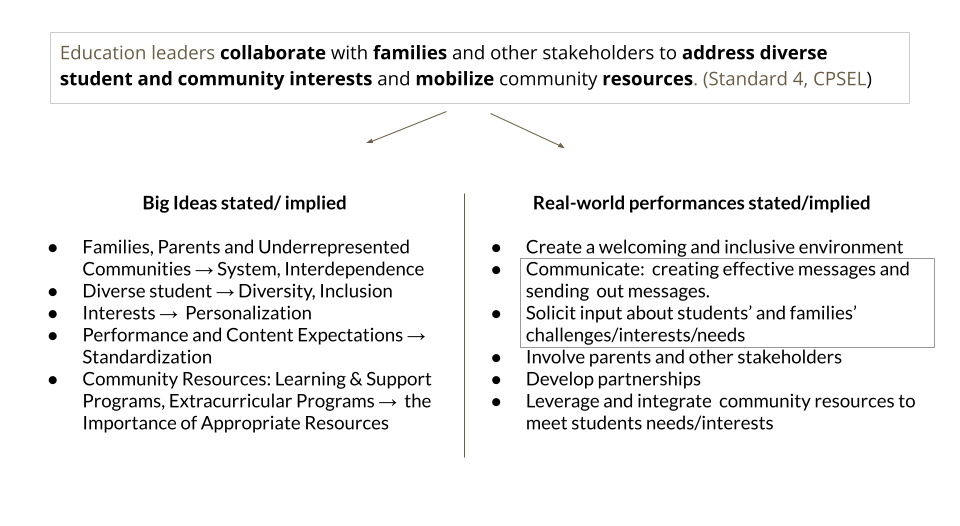Communication Strategies for Educational Leadership Professionals

Timeline: 3 weeks
Model: Understanding by Design
Responsibilities: Instructional Design
Tools: Google Suite
Communication Strategies for Educational Leadership Professionals is a 4-hour module designed for the EDAD 723: School Administration course at SFSU. The module covers leadership communication skills that education administrators must demonstrate. This is a collaborative work and a culmination of my learning about Understanding by Design and the backward approach to instructional systems design, during my studies at SFSU.
ANALYSIS
STANDARDS AND JOB ANALYSIS
To identify the learning goal we analyzed standard 4, Family and Community Engagement from the California Professional Standards for Education Leaders and standard 2, Communicating Effectively from PTA National Standards for Family-School Partnerships into the big ideas and important tasks that are implied. Additionally, we took into consideration the learning outcomes and program goals of the Ed.D. Educational Leadership program as outlined on the website. Lastly, we considered the job tasks that education leaders perform in their roles. The outcome of this process was the following instructional goal:
The graduate students will be able to follow guidelines for communication and participation established in federal and state mandates, district policies, and legal agreements, and solicit input from and communicate regularly with all parents and families in ways that are accessible and understandable.
LEARNER & CONTEXT ANALYSIS
In the process, we identified the learners' and context's characteristics. Important considerations were the diversity of the audience as to their level of knowledge and experience in leadership positions and the communities they serve.
INSTRUCTIONAL ANALYSIS
After we identified the instructional goal and analyzed the learners, we analyzed the instructional goal into the subordinate skills and identified the essential understandings and important questions that should be covered in the module. Finally, we converted the instructional goal and the subordinate skills into the terminal and subordinate objectives (what the graduate students will be able to do in the learning context) as described in the design document.
DESIGN
After the development of the terminal and subordinate objectives of the module, we developed the formative and summative assessments. To assess the graduate students' understanding of the module, we created a scenario-based activity in alignment with the goals and opportunities for checking the learners' understanding during the instruction.
Then, we developed the instructional techniques and methods to support instruction and learning. Τhis module follows direct instruction, namely structured and sequenced approaches to instruction led by a facilitator, and the lessons follow Gagne’s theory about the events of instruction. For more information about the methods refer to the design document.


.png)